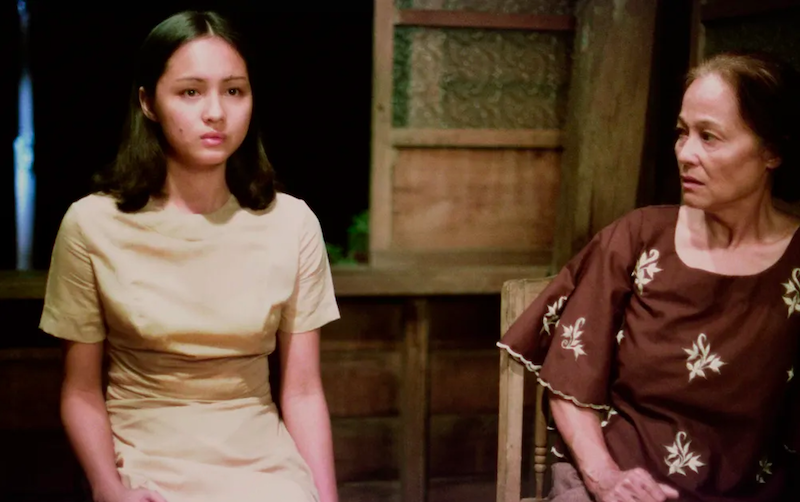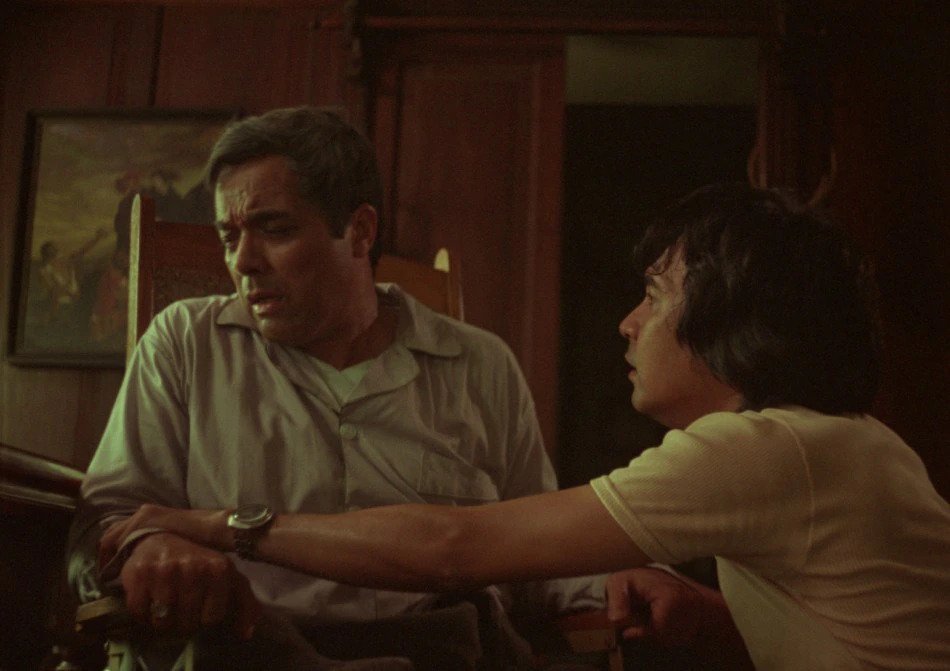‘Itim’ REVIEW: An Explosive Gothic Horror Debut
‘Itim’ REVIEW: An Explosive Gothic Horror Debut
Photo taken from the official Cannes website.
At this point, Mike De Leon is pretty much heralded as one of the greatest filmmakers to come out of the second golden age of Filipino cinema. With a filmography that is almost as flawless as his execution towards each and every subject matter, it’s a fair curiosity to wonder how it all started. Itim is more than just a legendary filmmaker’s debut. It is a debut that proves how refined Mike De Leon is as a filmmaker, and how he can expertly refine the influences that are most seen in his first outing.
Itim is Mike De Leon’s foray into gothic horror, exploring the spiritual nature of life and people in the quiet little town of San Ildefonso through two characters: Jun Torres, a photojournalist, and Teresa, a seamstress’ daughter. Centered around the occurrences that take place in during one Holy Week, this film’s exploration on religion, the occult, and a serious case of revenge feminism, take hold to deliver what is one of the director’s best works in his filmography.
Photo courtesy of Mike De Leon via ABS-CBN news.
To avoid spoiling much of this film, the best way I can describe Itim in all its religious glory is that it is the more refined, less ambiguous Filipino cousin of Michelangelo Antonioni’s Blow-Up. The film in reference is seen quite often here, with practical shot-for-shot reconstruction of some scenes and ideas. Except where the original Italian film is draped in a mystery that is never solved, this film finds the decency to provide answers and even tweak the formula through its heavy application of the occult. It’s often said how wonderful Charo Santos portrays this naivé teenage daughter of a conservative family (a role which she’d later revisit with Kisapmata where Vic Silayan takes the doting parent role instead of Mona Lisa in Itim) but even more so in this film, where she, as Teresa, is forced to serve as the vessel for a disturbed spirit while simultaneously living in a mystery that concerns her own actions. It’s a performance befitting of much praise, considering this too, is also her film debut.
Much of the same praise heaped on Charo Santos can also be said about the rest of the film’s cast. There’s Tommy Abuel’s portrayal of Jun, whose sleazy, yet passive demeanor provides the audience with an almost unbiased perspective of what goes down in San Ildefonso. Moody Diaz takes the role of comic relief as the caretaker of the Torres ancestral home–and rightfully keeps the audience laughing whenever she’s on-screen to keep the frights down!–while also commenting on the transgressions associated with her homeowners. Mona Lisa plays an all-too familiar role as the stern mother of Teresa. But I think the most interesting performance comes from the film’s paralytic, Dr. Torres, played by LVN mainstay Mario Montenegro. Both his acting and the framing provided by De Leon and cinematographer Rody Lacap allow the character of Dr. Torres to really maximize and help direct the spiritual nature which this film dissects with much detail.
Photo taken from the official Cannes website.
After all, this is a film exploring the occult aspect of Filipino christianity. Plenty of symbolisms and practices are seen in full display here. Except where most films often use religious imagery in a very static manner, De Leon and company opt to reconfigure them in ways that allude to untold parts of the story and even to deepen the characteristics that are associated with each of the film’s important characters. Discovering that this film was shot in De Leon’s home in San Miguel, Bulacan gives the religious imagery and setpieces seen in the film a level of organicness that’s way more authentic than most other similarly religious films will ever try to reach. Especially with his use of dream scenes (seen later in Kisapmata) do we find that De Leon clearly understands the subject matter that he is working with, and how that understanding is translated into something the audience can directly identify with. I haven’t even mentioned much about how this film’s intersection of revenge feminism and Christianity also make this a progenitor and a unique film in its own right, but I’ll leave that out as it spoils too much.
At its core, Itim bedazzles its audience with an ethereal approach to storytelling. Much of it is quite moody and even beautiful in spite of its darkness. The way it couples together elements to examine the forsaken and the damned, the horrifying and sometimes disturbing treatment of different imagery, they all manifest a film that proves how excellent and seminal Itim is as a debut film in a legendary filmmaker’s catalogue.
‘Itim’ was screened last November 20, 2022 in Gateway as part of QCinema’s Digitally Restored Classics lineup.
















